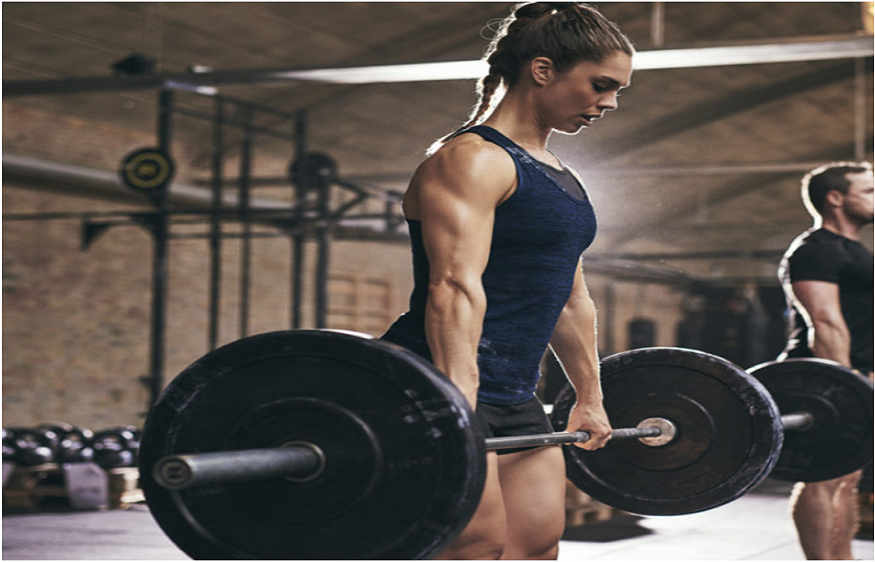Some weightlifting tips are universally applicable, but others are not, especially when it is about training women and men. For example, hormones and anatomy can differ between men and women, so it can have an impact on how women should be trained.
Women’s workouts have always focused on lighter weights and higher repetitions. Many women avoid lifting heavy weights out of fear of becoming “bulky” or too muscular. This can lead to them losing the power and strength they need for their whole lives.
We should replace our fear of becoming “bulky” by a healthy concern about losing muscle. Women lose 3 to 8% of their muscle mass every ten years after age 30. This rate of loss increases even further after age 60. As you age, your risk of injury and falling increases. Muscle training is also important because it helps to maintain strength and muscle mass.
Hormonal Variations
Contrary to men, whose hormones tend to stay stable, women’s hormones change throughout the month depending on their menstrual cycle phase (if any).
Each month’s menstrual cycle is divided into four weeks. The follicular phase is the first half of the monthly cycle and lasts approximately 14 days. Because of the hormonal profile, this phase is the same for men and women. It begins on the first day after bleeding.
The hormone levels are higher in the luteal stage, which lasts approximately 14 days. This changes a woman’s chemical makeup to be more catabolic, making it more difficult for her to increase the intensity of her training. Because recovery can take longer, sleep may be disrupted and energy levels may drop overall between ovulation and the end of the luteal phase.
You may find it helpful to decrease the intensity of your training during the luteal phase depending on how you respond to exercise.
Research indicates that although intensity and training volume may need to be decreased in the final two weeks, muscular training in the first two week of a cycle can result in “a greater gain of lean muscle mass than regular training.” This is why research recommends that you incorporate muscular training in your monthly cycle, especially the first two. You might find that strength training is more frequent or at a higher volume in the first two weeks. Then, you can reduce it to two to three days a week during the second and third weeks.
Physical Differences
Because women have larger hips, the Q-angle (measurement of the angle between long axes from the femur bone to the tibia) is more common in women than it is in men. This is why knee injuries are more common in women. For example, college-aged women are twice as likely to sustain knee injuries than men.
Additional Training Differences
These differences between the sexes make it important to place emphasis on stability in your knees and lower back to reduce injury risk. Basic functional movements like the deadlift, horizontal push and horizontal pull, vertical push and vertical pull, as well as rotational movements, are all important parts of a comprehensive muscular-training program.
Depending on your goals and energy levels, aim for between two to four days of muscle training each week . Do a full body workout if you are training twice a week. This will include squatting and upper-body push exercises like a bench or overhead press on one day, and deadlifts as well as upper-body pull exercises like pull-ups and rows on the other day.
When you train three to four times a week, try to do a lower body and upper-body split. On one day, focus on lower-body squatting, quad-centric movements such as Spanish Squats , leg extensions, and quad-centric movements like Spanish Squats . The next day, you can do upper-body pushing or pulling (such as pull-ups and rows, bench press, overhead presses and Arnold presses). On the third day, finish with deadlifts. The fourth day will include more glute- or hamstring-centric movements, such as single-leg deadlifts or hip or glute thrusts. Upper body pulling or pushing can be done on the fourth day.
No matter how many days you train for, each day should contain some core work. This includes planking and heavier carries (such a suitcase or farmer’s carries) as well as some rotational work (such a Russian twist or banded chops. To maximize strength and repetitions (reps), aim for 5-10 sets per muscle group each week. To maximize recovery, rest intervals between sets should not exceed 1-2 minutes.
Although there are physiological differences between men and women, you don’t need to drastically alter your training. Instead, pay attention to any fluctuations in energy and strengthen your knees and shoulders. You can lift heavier weights while still maintaining good form. This will help you to live longer and be healthier.
This post was written by Darryl Johnson, Co-Owner of Apex performance. At Apex performance we are a community of highly trained experts looking to provide performance enhancement and a permanent lifestyle change for our clients in a fun and interactive environment. Members can take advantage of one-on-one training, small group classes and specialized courses for a wide variety of athletics, sports training and body goals!



